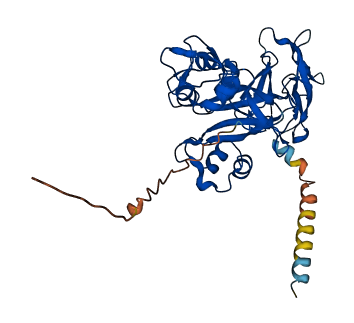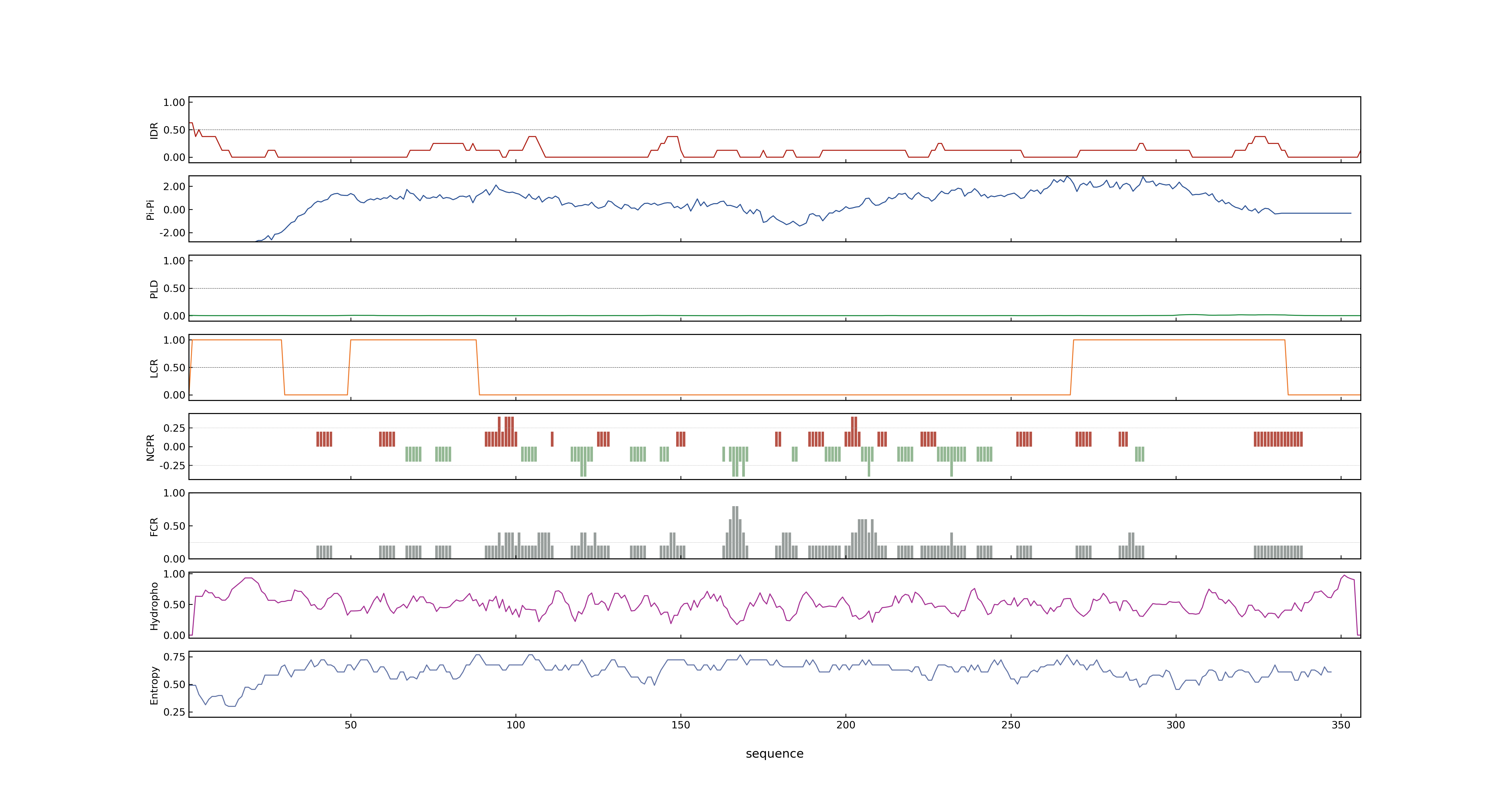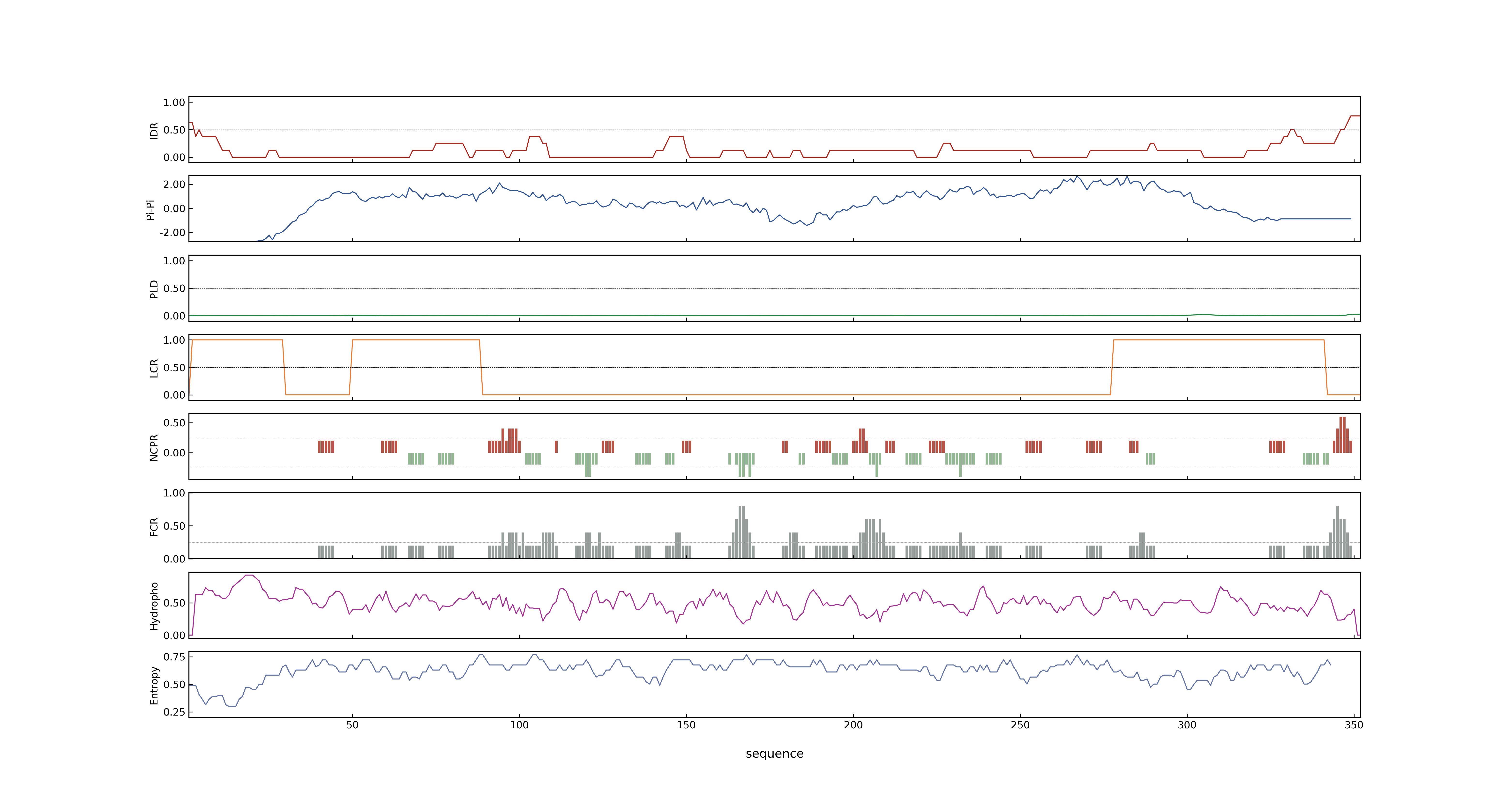- Information
- Symbol: CEBiP,OsCEBiP
- MSU: LOC_Os03g04110
- RAPdb: Os03g0133400
- PSP score
- LOC_Os03g04110.1: 0.1333
- LOC_Os03g04110.2: 0.1174
- PLAAC score
- LOC_Os03g04110.1: 0
- LOC_Os03g04110.2: 0
- pLDDT score
- 88.76
- Protein Structure from AlphaFold and UniProt
- MolPhase score
- LOC_Os03g04110.1: 0.02367460
- LOC_Os03g04110.2: 0.04257889
- MolPhase Result
- Publication
- An OsCEBiP/OsCERK1-OsRacGEF1-OsRac1 module is an essential early component of chitin-induced rice immunity, 2013, Cell Host Microbe.
- Plant cells recognize chitin fragments for defense signaling through a plasma membrane receptor, 2006, Proc Natl Acad Sci U S A.
- Perception of the chitin oligosaccharides contributes to disease resistance to blast fungus Magnaporthe oryzae in rice, 2010, Plant J.
- OsLYP4 and OsLYP6 play critical roles in rice defense signal transduction, 2013, Plant Signal Behav.
- Effector-mediated suppression of chitin-triggered immunity by magnaporthe oryzae is necessary for rice blast disease, 2012, Plant Cell.
- CERK1, a LysM receptor kinase, is essential for chitin elicitor signaling in Arabidopsis, 2007, Proc Natl Acad Sci U S A.
- Two LysM receptor molecules, CEBiP and OsCERK1, cooperatively regulate chitin elicitor signaling in rice, 2010, Plant J.
- Functional characterization of CEBiP and CERK1 homologs in arabidopsis and rice reveals the presence of different chitin receptor systems in plants, 2012, Plant Cell Physiol.
- The bifunctional plant receptor, OsCERK1, regulates both chitin-triggered immunity and arbuscular mycorrhizal symbiosis in rice., 2014, Plant Cell Physiol.
- Molecular Mechanism for Fungal Cell Wall Recognition by Rice Chitin Receptor OsCEBiP., 2016, Structure.
- Genbank accession number
- Key message
- Here, we report that the perception of CE by CEBiP contributes to disease resistance against the rice blast fungus, Magnaporthe oryzae, and that enhanced responses to CE by engineering CEBiP increase disease tolerance
- However, the single/triple knockout (KO) mutants of Arabidopsis CEBiP homologs and the overexpressor of AtCEBiP showed chitin-induced defense responses similar to wild-type Arabidopsis, indicating that AtCEBiP is biochemically functional as a chitin-binding protein but does not contribute to signaling
- To enhance defense responses to CE, we constructed chimeric genes composed of CEBiP and Xa21, which mediate resistance to rice bacterial leaf blight
- The expression of either CRXa1 or CRXa3, each of which contains the whole extracellular portion of CEBiP, the whole intracellular domain of XA21, and the transmembrane domain from either CEBiP or XA21, induced cell death accompanied by an increased production of reactive oxygen and nitrogen species after treatment with CE
- Knockdown of CEBiP gene by RNA interference resulted in the suppression of the elicitor-induced oxidative burst as well as the gene responses, showing that CEBiP plays a key role in the perception and transduction of chitin oligosaccharide elicitor in the rice cells
- In rice (Oryza sativa), the chitin elicitor binding protein (CEBiP) recognizes chitin oligosaccharides released from the cell walls of fungal pathogens
- Chitin is the major component of fungal cell wall and serves as a molecular pattern that can be recognized by the receptor OsCEBiP in rice, a lysine motif (LysM) receptor-like protein (RLP), to trigger immune responses
- Connection
- CEBiP~OsCEBiP, LYP4~OsLYP4, OsLYP4 and OsLYP6 play critical roles in rice defense signal transduction, Moreover, we found that OsLYP4 and OsLYP6 could form homo- and hetero-dimers, and could interact with CEBiP, suggesting an unexpected complexity of chitin perception in rice
- CEBiP~OsCEBiP, LYP6~OsLYP6, OsLYP4 and OsLYP6 play critical roles in rice defense signal transduction, Moreover, we found that OsLYP4 and OsLYP6 could form homo- and hetero-dimers, and could interact with CEBiP, suggesting an unexpected complexity of chitin perception in rice
- CEBiP~OsCEBiP, OsCERK1, Two LysM receptor molecules, CEBiP and OsCERK1, cooperatively regulate chitin elicitor signaling in rice, A plasma membrane glycoprotein, CEBiP (chitin elicitor binding protein) and a receptor kinase, CERK1 (chitin elicitor receptor kinase) (also known as LysM-RLK1), were identified as critical components for chitin signaling in rice and Arabidopsis, respectively
- CEBiP~OsCEBiP, OsCERK1, Two LysM receptor molecules, CEBiP and OsCERK1, cooperatively regulate chitin elicitor signaling in rice, We report here that rice cells require a LysM receptor-like kinase, OsCERK1, in addition to CEBiP, for chitin signaling
- CEBiP~OsCEBiP, OsCERK1, Two LysM receptor molecules, CEBiP and OsCERK1, cooperatively regulate chitin elicitor signaling in rice, The results of a yeast two-hybrid assay indicated that both CEBiP and OsCERK1 have the potential to form hetero- or homo-oligomers
- CEBiP~OsCEBiP, OsCERK1, Two LysM receptor molecules, CEBiP and OsCERK1, cooperatively regulate chitin elicitor signaling in rice, Immunoprecipitation using a membrane preparation from rice cells treated with chitin oligosaccharides suggested the ligand-induced formation of a receptor complex containing both CEBiP and OsCERK1
- CEBiP~OsCEBiP, OsCERK1, Two LysM receptor molecules, CEBiP and OsCERK1, cooperatively regulate chitin elicitor signaling in rice, Two LysM receptor molecules, CEBiP and OsCERK1, cooperatively regulate chitin elicitor signaling in rice
- CEBiP~OsCEBiP, OsCERK1, OsCERK1 and OsRLCK176 play important roles in peptidoglycan and chitin signaling in rice innate immunity, OsCERK1 associated with OsLYP4 or OsLYP6 when induced by PGN but it associated with OsLYP4, OsLYP6, or CEBiP under chitin treatment, suggesting the presence of different patterns of ligand-induced heterooligomeric receptor complexes.
- CEBiP~OsCEBiP, OsCERK1, The bifunctional plant receptor, OsCERK1, regulates both chitin-triggered immunity and arbuscular mycorrhizal symbiosis in rice., On the other hand, a KO mutant of OsCEBiP, which forms a receptor complex with OsCERK1 and is essential for chitin-triggered immunity, established mycorrhizal symbiosis normally
- CEBiP~OsCEBiP, OsRacGEF1, An OsCEBiP/OsCERK1-OsRacGEF1-OsRac1 module is an essential early component of chitin-induced rice immunity., Collectively, our results suggest that OsCEBiP, OsCERK1, OsRacGEF1, and OsRac1 function as key components of a "defensome" critically engaged early during chitin-induced immunity
- CEBiP~OsCEBiP, OsCERK1, The rice LysM receptor-like kinase OsCERK1 is required for the perception of short-chain chitin oligomers in arbuscular mycorrhizal signaling., By contrast, rice lines mutated in OsCEBiP, encoding the LysM receptor-like protein which associates with OsCERK1 to perceive chitin elicitors of the host immune defense pathway, responded positively to Myc-COs
Prev Next


